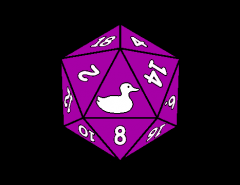Misfit Studios is running a (currently funded) Kickstarter campaign for a Pathfinder compatible rulebook about love and sex in a fantasy setting, The Book of Passion. Here to tell us about the project are authors Will Wells (WW) and Margherita Tramontano (MT).
RC: What does The Book of Passion mean to you?
MT: For me? More options for characters, more things to create, more fun for me, my collaborators and my readers. I have fun imagining new rules, and I hope that someone will have fun using them. It’s the same for everything I write.
WW: Yeah, basically that.
RC: Is this a project you brought to Misfit Studios? If so, what made them the ideal publisher for this book? If not, why do you think they chose you for this (wait for it) passion project?
MT: When we began discussing the idea of a book, I already had submitted some material to Christina, so I thought we could try. She had demonstrated to be interested in my material even if I was a newbie author, and she was immediately interested in this idea too. And here we are, some years later, near to our goal.
RC: No edition of Dungeons & Dragons, including Pathfinder, has had first party published rules for love and sex, and yet every edition has had some fan-generated or third party supplement that covers the topic. Why is that?
WW: As far as I can tell, the reason is a cowardly move by the legal department at Wizards of the Coast. Now, as I have said before, this story came to be by hearsay and could be entirely false. However, as I heard it told, The Book of Erotic Fantasy was planned to be an official D&D product back in 3rd Ed before the legal department at WotC freaked out about a “non-family friendly product” and changed the OGL to keep the D&D logo off of the book. That rule then got copy-pasted into the Pathfinder OGL and here we are – it is actually impossible for Paizo to publish a first party book on sex even if they wanted to. Now, as I said above, this is just the story I was told – I have no idea if it is accurate. However, it does seem to fit the facts and no one has ever told me that this story is wrong.
RC: According to your table of contents, the first chapter of the book is Rules for Sex. How are these rules handled? Like combat, with rolls and alternating turns? More like skill checks, where the time and details are abstracted?
WW: We actually use a two-tier system with simple rules for faster paced resolutions or for tables that want to keep things more PG rated and a more complex system for more detailed encounters.
The simple system is a single skill check against a DC to which some flat modifiers can be added or subtracted. It is fast, easy, and resolves sex scenes quickly – either to move on to other things or to quickly allow a character to activate a class feature from one of our archetypes.
The complex system, meanwhile, is set up like an encounter, with characters declaring actions and needing to go through various phases of the sexual encounter. This version still relies on skills, but operates on a “three successes before three failures” type of challenge to move from the first phase to the second, and so forth.
RC: The table of contents says that the book is mechanically front-loaded, but a lot of the selling points in the Kickstarter campaign video sound more like advice for how a GM can incorporate sexual content. Why is the content in the order it is and what is the ratio of character options to conceptual discourse?
WW: Most of the book is character options. That was our main focus – to create a book that focused on player options – particularly class archetypes – above all else. We wanted to provide players with options for love and sexuality that they would actually use. The GM sections (chapters 6 and 7) are mostly about incorporating these elements into the everyday world and deciding about what kind of setting they want to have. Also, the video completely forgets the conception, pregnancy, and crossbreeding rules, not to mention the appendices which contain new diseases (STDs) and poisons.
RC: I’m intrigued by the class options. Is the intent to create a casanovan version of every core class? What are some of your favourite examples of content from this chapter?
WW: Well, not every class lends itself to being a casanova, but something like that. We tried to focus in on romantic tropes that already existed.
As far as favorites, I do quite like the “Knight of Passion” – a paladin archetype to create a “knight in shining armor” type character who is equally skilled at bodyguarding and seduction. And then there’s the “Tantric Spellstealer,” inspired by the anime trope where people can have their power stolen by sleeping with spellcasters.
MT: We adapted tropes from nearly everything we liked, from medieval poetry (the Stilnovista Bard) to anime (the Beautiful Champion oracle) to fairy tales (the Oath of Love for paladins) to chivalric literature (the Knight Servant) and so on
There are options not only for a “casanova” character, but also for a platonic, idealistic lover, a faithful mate, a nurturing mother (or even grandmother!). Love has MANY facets.
I am very fond of my Merciful Oracle archetype, and of course of the Oracle of Passion. All the book grew around her!
RC: Tactical seduction is a trope of every genre of fiction, as are romantic subplots. Why don’t you think they are common in tabletop RPGs?
WW: I think that depends on the tabletop! They are certainly common in games my group runs. And, actually, they come up fairly often in a lot of published adventures – to name one, Rise of the Runelords features a number of sexual and romantic elements.
MT: Who said they’re not common? Here in Italy they are even TOO common, particularly when the GM is a woman! XD
WW: That said, I think one reason it sometimes fails to show up is because there are no mechanics to represent it. It only makes sense that certain elements get used less if there’s no way to represent them. For example, I don’t recall PCs getting to run kingdoms very often, even if they were the wealthiest people around – at least not until Kingmaker provided the mechanics to do so. Since those rules came out, I have had PCs in charge of nations far more often. I hope that the Book of Passion helps to do the same with sexual and romantic themes.
RC: Sex and sexuality is a greater taboo in North America than violence. Why do you think that is?
MT: Not only in North America. In Italy there is a double approach to these things- on one hand an exaggerated prudish facade when it comes to “things that could scandalize children”, on the other an exaggerated laxism on abusive and dangerous situations in reality. I think that a mix of prejudices from different sources is to blame- religious extremism, chauvinism, ignorance, and other. Many people feel they have the right to decide what is “righteous” and “sinful”, “natural” or “unnatural”, and are frightened by things that don’t fit in their mental schemes. I, however, trust in the ability of the human race to evolve and surmount their own mental barriers.
WW: I would chime in, since I live in North America, but it would mostly be a ranty grumble about outdated social mores, puritans, gender roles, and the social patriarchy. I will say that what Margherita said about Italy actually sounds remarkably familiar to me as a resident of Ohio.
RC: Agency is important to players. How do you convey the sensuality of attraction and flirtation between characters without removing character agency?
WW: By being clear that seduction rules are for using on NPCs, not on PCs. Only the player can decide how their PC reacts to something. Are there spells that can remove PC agency? Sure – they’re the exact same enchantment spells from the Core Rulebook that remove PC agency about who they attack. And yes, we do address the fact that using a Charm Person to get someone to sleep with you is rape.
RC: The Book of Passion Kickstarter says it is for mature audiences. How explicit is the content?
WW: The text? Actually, fairly tame. We weren’t sure when we were writing it what the rating on the book was going to be. While we discuss sexual topics, it is done in a fairly calm and detached manner. Even the “story” text features a tasteful fade-to-black when an actual sex scene begins.
Of course, that was before the art started coming in. The art is VERY explicit. Also, we’ve been asked to be a bit more explicit for some of the bonus content (for example, my 150 backer goal made Margherita blush).
MT: Oh, don’t make me talk about that. XD Our readers are in for a big surprise when we reach that goal!
RC: The Kickstarter campaign also says The Book of Passion is LGBTQ Friendly. How so?
WW: First off, one of the very first things I do is define “sex” as any direct stimulation of the genitals. The book never makes assumptions about who will be sleeping with whom. We also discuss gender fluidity – and by discuss, I mean we have several archetypes and class options for gender fluid and trans characters. Also, two of our Iconics (the characters who appear as examples throughout the book) are bisexual women in a lesbian relationship that goes poly when one of them needs to get married.
MT: Where there’s love, there’s no sin. And we both think that sex without love is… well, like pizza without mozzarella. XD
RC: One of the pieces of artwork previewed features a BDSM situation. How does The Book of Passion handle kink?
WW: BDSM gets special treatment as it has uses outside the bedroom, and thus both masochist and sadist get combat traits (see the APG). Otherwise, kinks are wrapped into the sex rules presented in chapter 1, providing bonuses to rolls. Since it would be far too difficult for us to list kinks, all kinks work the same way mechanically and are otherwise an individual character choice like hair or eye color.
RC: What do you think would convince someone who is generally skeptical about The Book of Passion to give it deeper consideration?
MT: We are respectful. We are considerate. We tried to offend nobody. And we don’t talk about “sex”. We talk about PASSION. That’s very, very better!







Very interesting. I can see one of my players balking at adding something like this to the game but others jumping for joy at it. It would definitely come in handy if I were to play or have a player with a PC cleric with a deity of passion. Calistria comes to mind immediately. With the mechanics and guidelines presented by this supplement I can see more folks attempting to play a more passionate and seductive type PC.
When is it expected to be released?
August 2017. Not officially listed as a GenCon release, but I think that’s a safe bet.